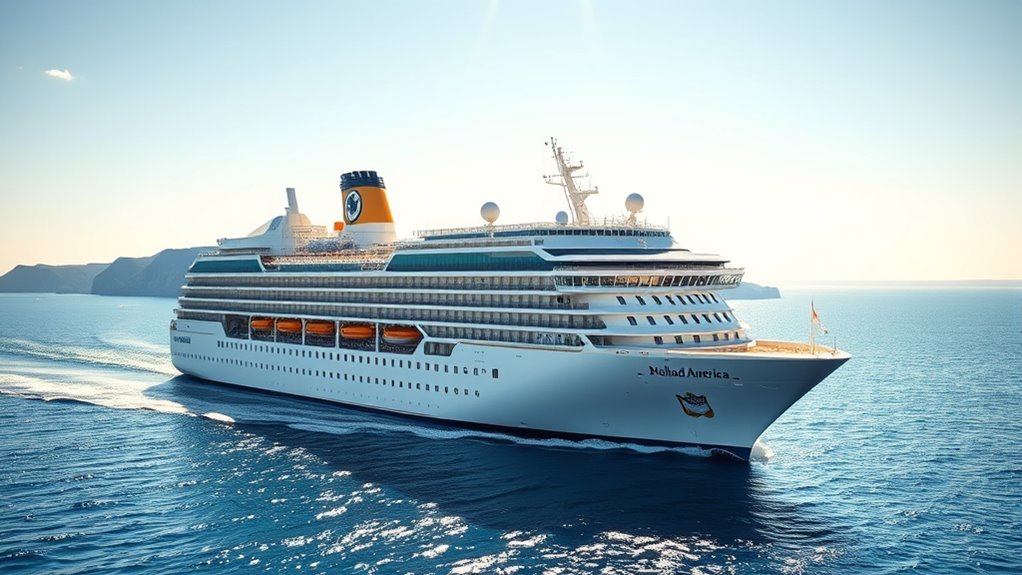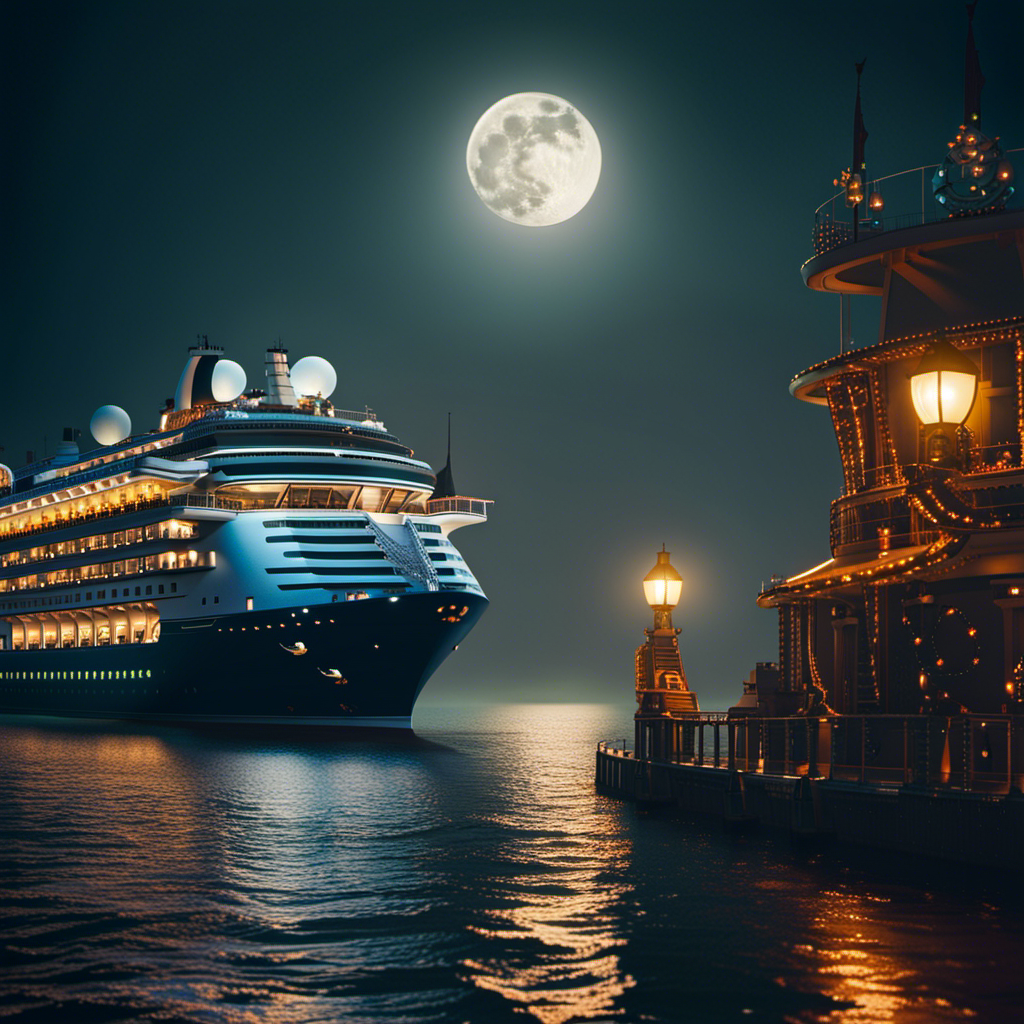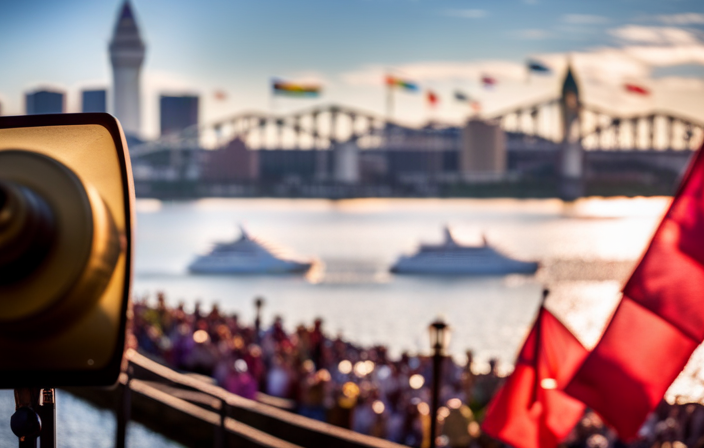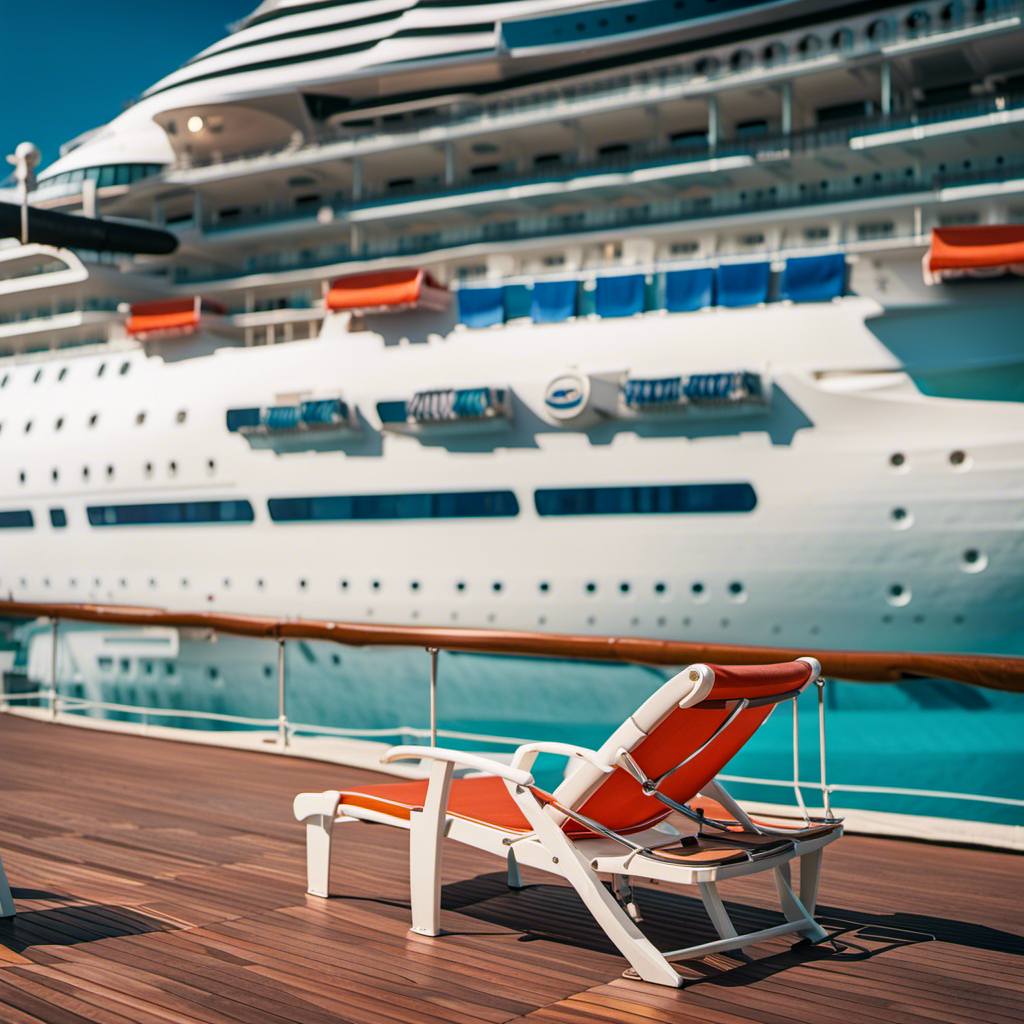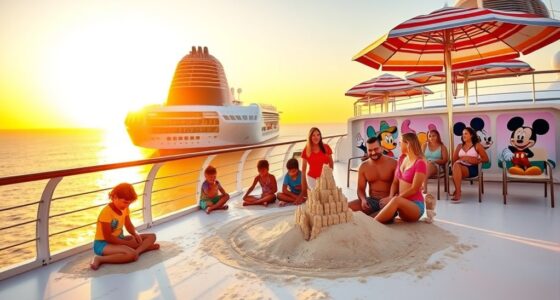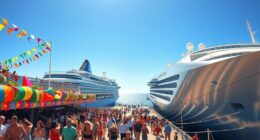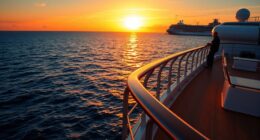Holland America Line has a rich history spanning over 150 years, evolving from a pioneering transatlantic carrier for European immigrants to a leader in luxury leisure cruises. You’ll find ships that blend tradition with modern innovation, offering diverse itineraries and eco-friendly features. Their legacy is built on safety, comfort, and cultural exchange. Discover how HAL shaped cruise tourism and continues to set industry standards—there’s much more to explore beyond this overview.
Key Takeaways
- Holland America Line has over 150 years of history, pioneering transatlantic travel and shaping modern cruise industry standards.
- Originally transporting European immigrants, it transitioned to leisure cruising, emphasizing luxury, comfort, and cultural experiences.
- The company owns iconic ships and private islands, blending maritime heritage with modern innovation and sustainability.
- It played a crucial role in cultural exchange, supporting migration and global travel between Europe and North America.
- As part of Carnival Corporation, Holland America continues to lead in cruise innovation, tradition, and responsible tourism.
The Early Years and Founding of HAL
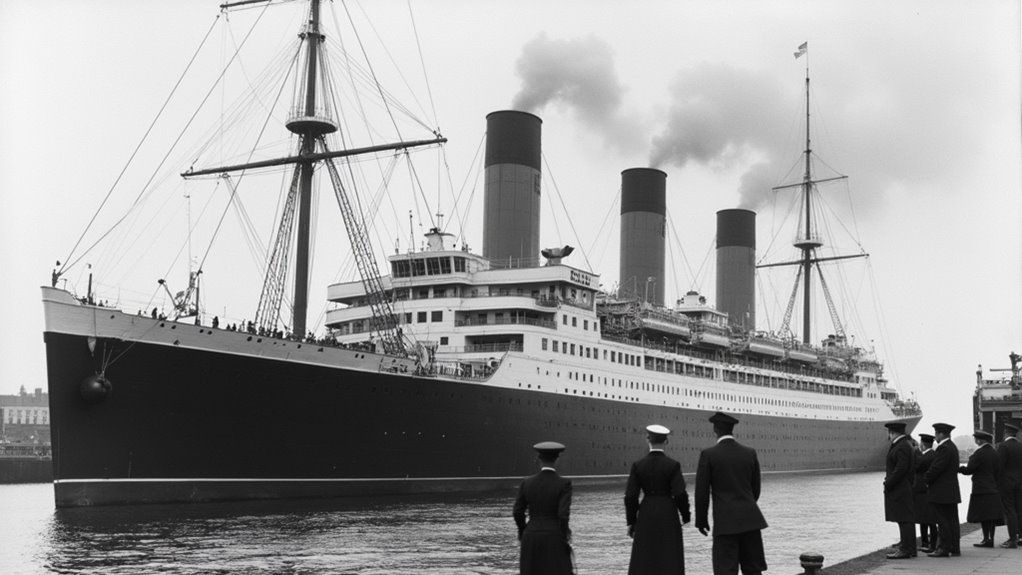
Holland America Line, originally founded as Nederlandsch-Amerikaansche Stoomvaart Maatschappij (NASM) in 1873, emerged from a reorganization of the Rotterdam-based shipping firm Plate, Reuchlin & Co. You can trace its roots to a company focused on transatlantic service between the Netherlands and the Americas. Its first ship, Rotterdam I, set sail from the Netherlands to New York on October 15, 1872, with a 15-day crossing. This voyage marked the beginning of the company’s focus on transporting European immigrants to the United States. In 1896, the company officially adopted the name “Holland America Line.” Early operations centered on cargo and passenger transport, especially immigrant traffic, and by 1898, it owned six ships, carrying thousands of passengers and tons of cargo each year. The company’s commitment to pioneering transatlantic passenger routes helped establish its reputation in the shipping industry. Its dedication to innovative navigation and customer service contributed significantly to its growth and longevity in the maritime sector.
Growth and Resilience Through the 20th Century
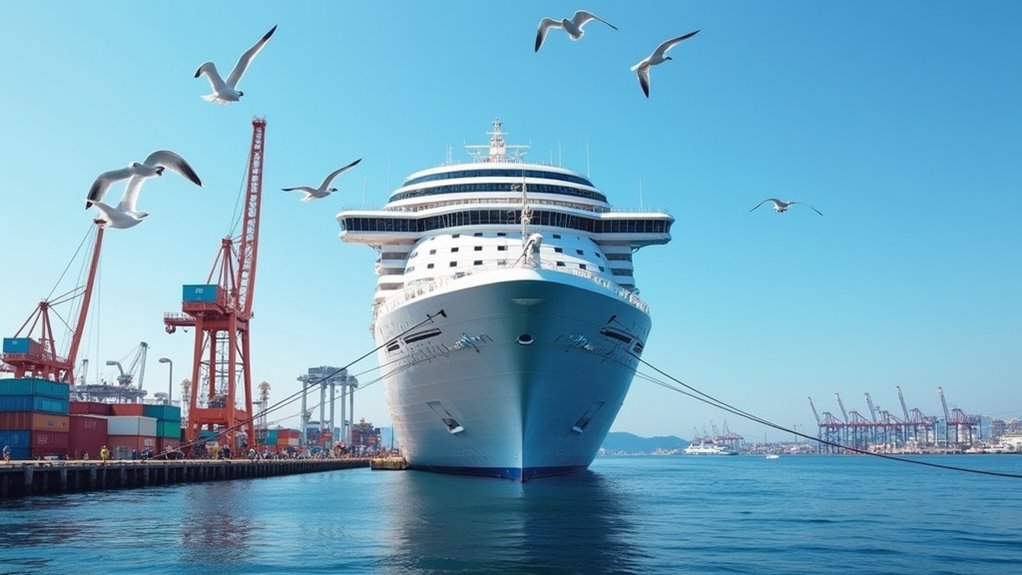
After World War II, the company quickly resumed immigrant transportation from the Netherlands to Canada and other destinations, supporting large waves of migration. You see, Rotterdam to Hoboken routes restarted, with Nieuw Amsterdam (II) calling at Le Havre due to port limitations, and ports like Cobh, Quebec, Montreal, and Bremerhaven added by 1963, expanding North American service. This helped balance transatlantic routes with ships like Veendam (II), Noordam (II), and Westerdam (I). As the industry evolved, Holland America launched Rotterdam (V) in 1958, blending transatlantic travel with luxury cruising. The company also modernized its branding, adopting a dark blue hull and rebranding the house flag in the late 1960s, symbolizing its shift from liners to cruises. Recognizing the importance of self-awareness, the company adapted to changing market demands and industry trends, ensuring its continued growth and resilience. Additionally, the emphasis on industry evolution allowed Holland America to remain competitive in the shifting maritime landscape. The company’s ability to adapt to industry changes showcased its commitment to innovation and customer satisfaction, securing its place in maritime history, as it continually responded to technological advancements and passenger expectations. Moreover, investing in local investment options contributed to its sustained success and diversification efforts.
Transitioning From Immigrant Transport to Leisure Cruising
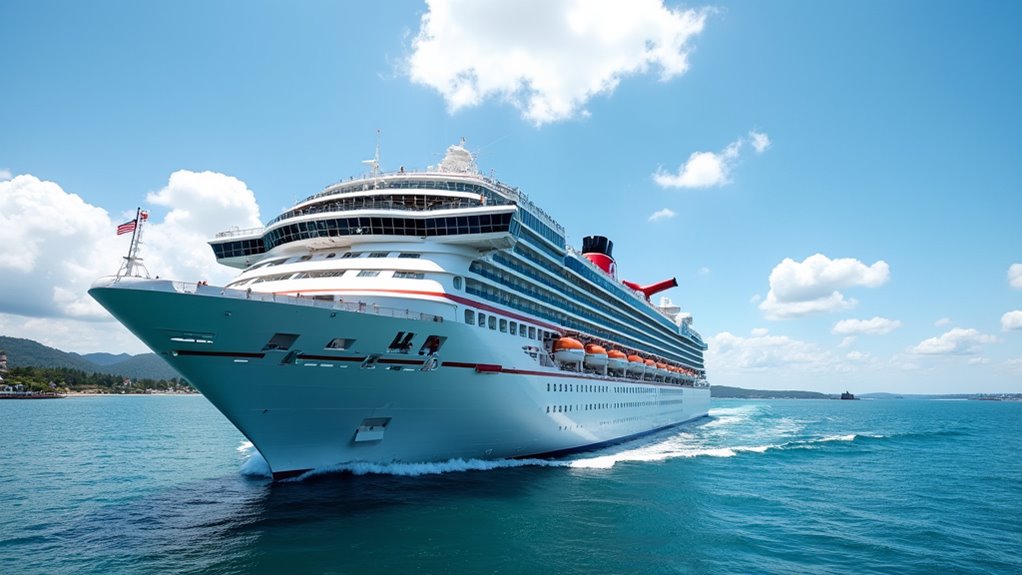
How did a line once focused on transporting millions of immigrants transform into a leader in leisure cruising? It shifted its business model over time, starting with its first voyage in 1872 from the Netherlands to New York. By the late 19th century, the fleet carried over 400,000 immigrants, but early on, it introduced pleasure cruises, beginning with Rotterdam II in 1885. This marked the start of its move toward leisure travel. The company continued to modernize its fleet and expand its offerings, aligning with industry trends like generative AI to enhance passenger experiences. Additionally, the company embraced innovations such as sustainable practices to appeal to environmentally conscious travelers. – Sold its cargo division in 1973 to focus on passenger services – Expanded leisure cruise offerings in the late 19th and early 20th centuries – Rebranded from NASM to Holland-Amerika Lijn (HAL) – Transformed from immigrant transporter to vacation cruise operator – Invested in fleet upgrades to enhance passenger experience
Innovations and Fleet Highlights
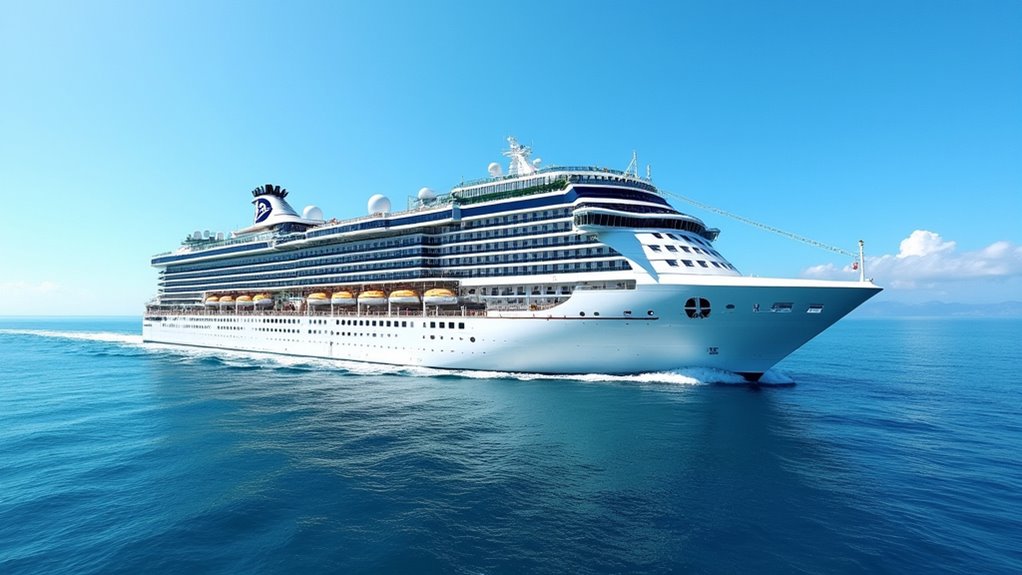
The Holland America fleet showcases a blend of innovative design and technological advancements that enhance guest experiences. The ships range from about 61,000 to nearly 100,000 GRT, with the largest, Rotterdam, measuring nearly 984 feet and carrying over 2,650 passengers. The newest addition, Rotterdam (2021), features cutting-edge amenities and eco-friendly technologies, while ships like Nieuw Statendam and Koningsdam emphasize modern entertainment and digital innovations. Advanced stabilization systems improve comfort, even in rough seas. The fleet’s mid-sized classification allows access to ports larger ships can’t reach, supporting tailored itineraries and a relaxed onboard atmosphere. With passenger capacities from 1,432 to over 3,100, the fleet balances intimacy and scale, blending heritage with contemporary luxury to deliver a refined cruising experience. Additionally, the incorporation of eco-friendly technologies underscores their commitment to sustainability and environmental responsibility. The use of modern navigation systems further enhances safety and efficiency across the fleet. Notably, the fleet’s focus on market demand and technological innovation positions Holland America as a leader in the evolving cruise industry. Furthermore, their emphasis on sustainable practices demonstrates a forward-looking approach to environmental stewardship. The integration of password security features and other security measures ensures passenger data remains protected, reflecting their commitment to safety.
The Role of HAL in Shaping Cruise Tourism
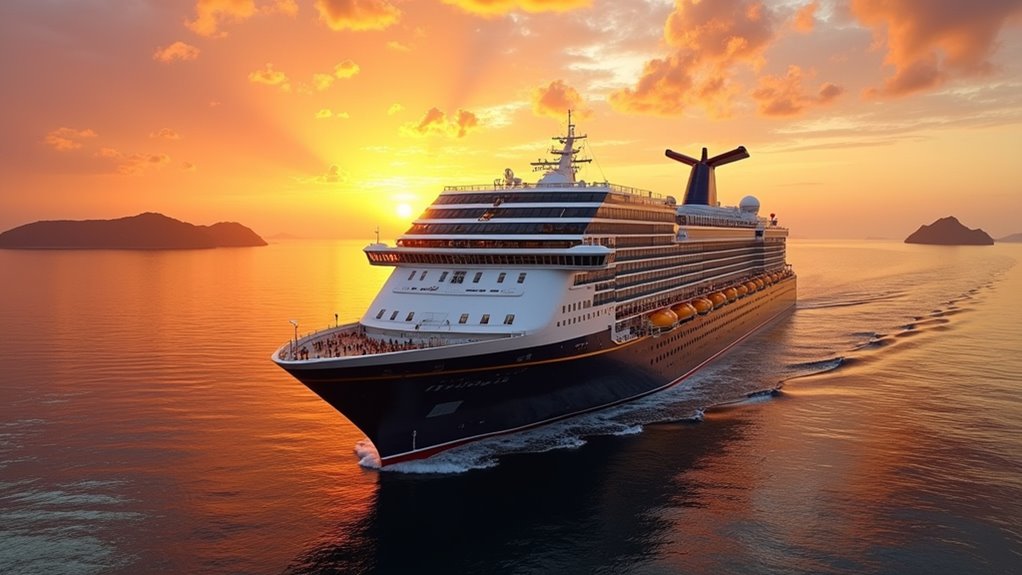
Holland America Line has played a key role in shaping cruise tourism by pioneering transatlantic travel and shifting focus toward leisure cruising. Your experience with HAL’s routes shows how they’ve expanded destinations and influenced industry standards. Their innovations continue to impact how we explore the world by sea today. Additionally, their commitment to sustainable practices demonstrates their dedication to minimizing environmental impact and promoting responsible tourism. Recognizing their family-oriented approach underscores the importance of community and tradition in their brand identity. Furthermore, their dedication to spiritual insights reflects a broader understanding of creating meaningful and transformative travel experiences for passengers. Incorporating educational toys and engaging activities onboard further enhances the diverse and enriching experiences that define their cruises. The integration of Cultural Intelligence strategies can help HAL better understand diverse passenger needs and preferences, fostering more inclusive and personalized experiences.
Pioneering Transatlantic Travel
Pioneering transatlantic travel, Holland America Line played a crucial role in shaping the modern cruise industry by establishing reliable routes, ports, and standards that continue to influence cruise tourism today. You can see its impact in the development of key routes between Europe and North America, creating dependable connections for immigrants, troops, and leisure travelers alike. HAL’s early innovations set high standards for safety, comfort, and service—values still central to cruise experiences. Its ships, like Rotterdam I and later Nieuw Amsterdam II, became symbols of luxury and reliability. The company also built essential infrastructure, including ports and logistics, which laid the groundwork for today’s global cruise network. HAL’s legacy as a pioneer in transatlantic travel remains evident in the industry’s enduring emphasis on quality and trust. Additionally, advancements in technology in energy distribution, such as AI-driven smart grids, have helped optimize the efficiency and sustainability of cruise operations worldwide. Furthermore, HAL’s commitment to safety protocols established industry benchmarks that continue to protect passengers and crew, reinforcing trust in cruise travel.
Transition to Leisure Cruises
Have you ever wondered how a line once known for transatlantic crossings transformed into a symbol of leisure and vacation cruising? By 1964, Holland America operated 61 transatlantic voyages, but that number sharply declined by 1968 to just 21, signaling a strategic shift. As jet air travel reduced demand for ocean crossings, HAL increasingly focused on leisure cruises, repositioning itself as a vacation brand. The company expanded through acquisitions like Westours in 1971 and Windstar Cruises in 1988, broadening its offerings and destinations. Modern ships like the *Nieuw Statendam VI* emphasize onboard leisure, reflecting this shift. Becoming part of Carnival Corporation in 1989 strengthened HAL’s market position, enabling it to maintain its upscale cruise experience while shaping the evolution of cruise tourism from transatlantic liners to leisure vessels. Private placement equity markets have also played a role in funding the development of the company’s new vessels and expanding its global reach.
Cultural Impact and Historical Significance
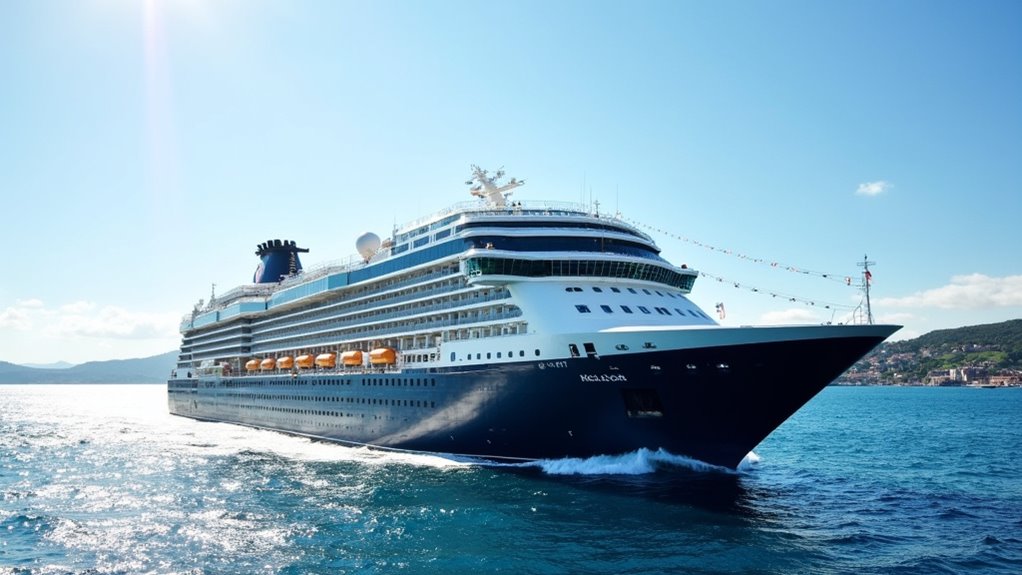
You can see Holland America’s impact through its role in shaping migration patterns and cultural exchange, as it transported over 400,000 European immigrants to North America. Its maritime heritage reflects a proud Dutch tradition of exploration, innovation, and hospitality that still influences modern cruising. This legacy connects the company’s historical milestones to its ongoing contributions to global travel and cultural understanding. Additionally, Holland America’s commitment to cruise safety and passenger comfort demonstrates how its longstanding traditions continue to evolve in the contemporary maritime industry. The integration of passenger experience features ensures that the company’s rich history remains relevant to today’s travelers.
Immigrant Migration Influence
The immigrant migration facilitated by Holland America Line had a profound cultural and historical impact on the United States. You can see how this migration shaped American society through its diverse passenger list, featuring Dutch, German, Scandinavian, Polish, Irish, and French immigrants. These journeys fostered multicultural communities, especially in urban centers like New York, where immigrants brought their traditions, languages, and customs. The line’s records offer valuable genealogical insights, connecting descendants to their heritage. Immigrants also contributed to economic growth, fueling industrial and agricultural development across the country. Rail connections enabled many to settle inland, spreading their influence further. Overall, Holland America’s role in migration helped shape the demographic and cultural landscape of early 20th-century America.
- Facilitated diverse European migration to America
- Promoted multicultural communities in urban centers
- Enabled descendants to trace their heritage
- Supported economic growth through immigrant labor
- Expanded demographic and cultural influence
Maritime Heritage Legacy
Holland America Line has left an enduring mark on maritime culture and history through its pioneering role in transatlantic shipping and leisure cruising. You can see its impact in the way it facilitated cultural exchange and shaped industry standards. The company’s early transatlantic voyages, over 1,300 by 1898, connected Europe and the Americas, fostering international ties. Its shift to leisure cruises started in 1895, revolutionizing vacation travel. As a symbol of maritime heritage, HAL’s ships introduced innovations in comfort and safety, and its iconic funnel colors and house flag remain recognizable. The company’s legacy includes private islands like Half Moon Cay and preserved memorabilia in maritime museums, exemplifying its significance in global maritime history.
| Impact Area | Contribution |
|---|---|
| Cultural Exchange | Facilitated European-American connections |
| Industry Innovation | Set standards for safety and passenger comfort |
| Heritage Preservation | Maintains ships, memorabilia, and traditions |
Celebrating Over a Century and a Half of Maritime Heritage
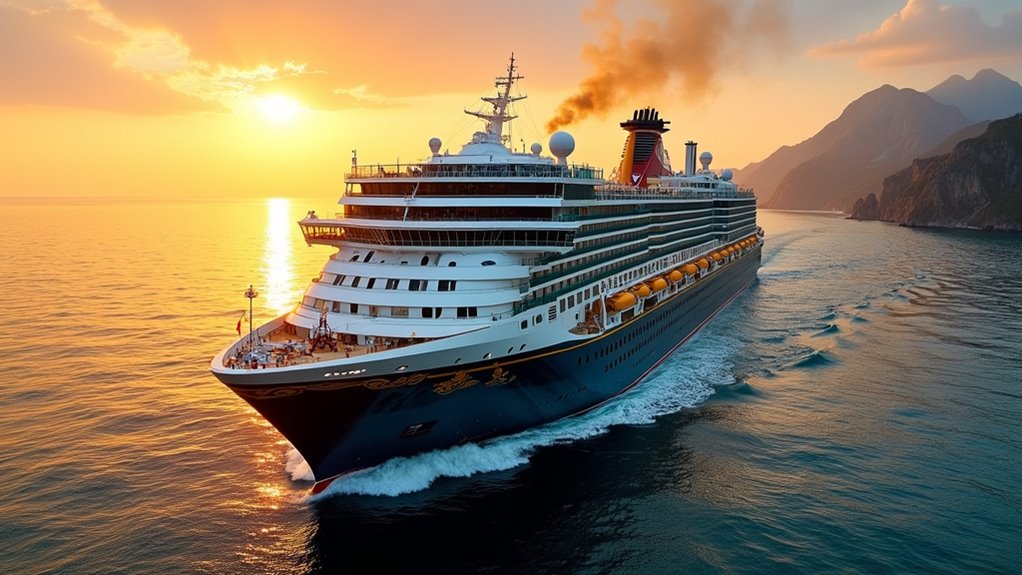
Celebrating over a century and a half of maritime heritage, Holland America has established a legacy rooted in innovation, luxury, and cultural exchange. From its founding in 1872 with the maiden voyage of the *Rotterdam*, to its role in transporting millions of European immigrants, the company has shaped maritime history. Over the years, it embraced leisure cruising, introducing vacation voyages in 1895 and modern luxury experiences. The company’s ships, named with “dam” suffixes, symbolize its tradition, and its fleet now sails worldwide, carrying over 800,000 passengers annually. As a part of Carnival Corporation since 1989, Holland America continues to honor its heritage through diverse destinations, pioneering cruise innovations, and a commitment to cultural exchange.
- Founded in 1873 in Rotterdam with the Rotterdamship
- First vacation cruise offered in 1895
- Shifted to leisure cruising in the 1950s-60s
- Became part of Carnival Corporation in 1989
- Operates 11 ships worldwide today
Frequently Asked Questions
How Has HAL Maintained Its Brand Identity Over 150 Years?
You see that HAL has kept its brand identity strong over 150 years by consistently honoring its heritage. You notice the iconic green-white-green color scheme, the use of Dutch city names, and the classic ship designs that reflect its roots. You also observe how HAL evolved from passenger and immigrant transport to luxury cruising, all while maintaining elegance, tradition, and a focus on quality experiences that connect past and present seamlessly.
What Environmental Initiatives Does HAL Implement on Its Ships Today?
Imagine sailing on a vessel that’s a beacon of green innovation, not just a cruise ship. You’ll find it equipped with shore power to cut emissions at port, advanced air quality systems, and the use of low-carbon biofuels. Waste is minimized through recycling and refillable amenities, water and waste are carefully managed, and onboard programs support wildlife conservation. These efforts make your journey both breathtaking and environmentally responsible, safeguarding oceans for generations to come.
How Does Hal’S Private Island, Half Moon Cay, Enhance Guest Experiences?
You’ll love how Half Moon Cay enhances your experience with pristine beaches, crystal-clear waters, and secluded cabanas for privacy. You can enjoy a variety of activities like snorkeling, kayaking, horseback riding, and stingray encounters. The island’s natural beauty, protected habitats, and wildlife create a tranquil setting. Plus, recent upgrades, including a new beach club and updated dining venues, make your visit more comfortable and memorable.
In What Ways Has HAL Contributed to the Development of Modern Cruise Tourism?
Think of Holland America Line as a guiding star in modern cruise tourism. You see, they’ve pioneered innovations like advanced ships, diverse itineraries, and private islands that transform your voyage into an unforgettable adventure. Their focus on sustainability and cultural preservation shapes the industry’s future. By continuously expanding their reach and enhancing passenger experiences, they set new standards, making cruising more accessible, comfortable, and exciting for travelers like you.
How Has HAL Adapted Its Ships for Contemporary Passenger Needs and Technology?
You see how HAL adapts its ships to meet modern passenger needs and technology by upgrading vessels like Nieuw Statendam with contemporary design and amenities. They incorporate advanced navigation, real-time safety systems, and eco-friendly tech like shore power and biofuels. These enhancements guarantee your cruise is comfortable, safe, and environmentally responsible, aligning with your expectations for innovation, sustainability, and immersive experiences across diverse and exciting destinations worldwide.
Conclusion
You’ve seen how Holland America has evolved from its humble beginnings to a leader in cruise tourism. With over 85 ships serving millions of travelers, it’s clear that their legacy of innovation and resilience continues to shape the industry. In fact, HAL’s fleet has traveled more than 1.2 million nautical miles annually, showcasing their commitment to exploration and excellence. This rich history proves that Holland America’s maritime heritage remains a beacon of adventure and tradition.

